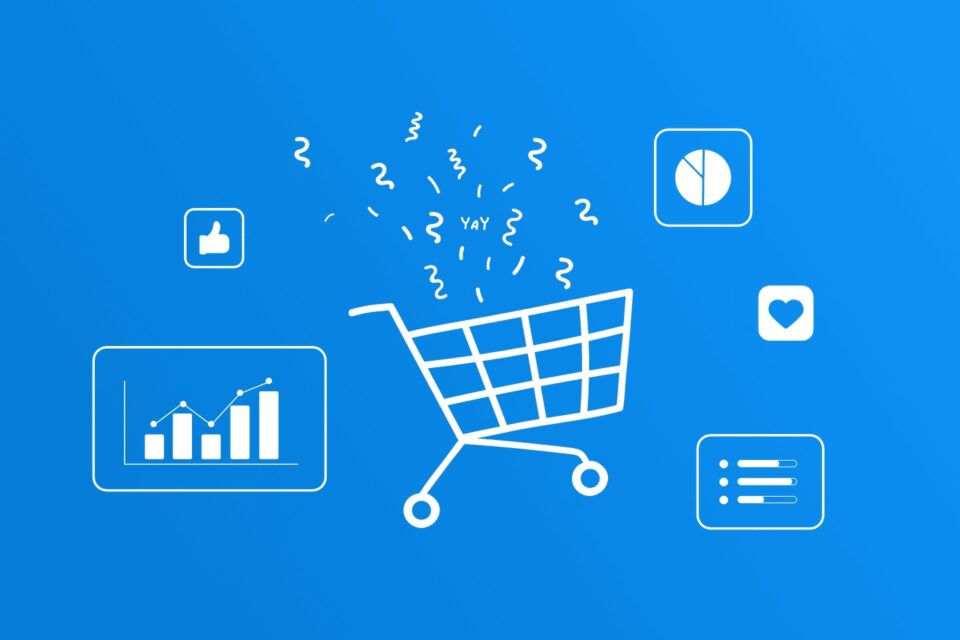In the fast-paced world of e-commerce, staying ahead of the curve is essential to drive maximum product sales. As the digital marketplace evolves, so do the strategies and technologies that can make or break an online store. In this article, we will explore the latest e-commerce trends and offer practical tips on how to optimize your online store for maximum product sales.
1. Mobile Commerce Dominance
The Rise of Mobile Shopping
Mobile commerce, or m-commerce, continues to dominate the e-commerce landscape and dropshipping automation software helps a lot in this industry. With more consumers using their smartphones for shopping, optimizing your online store for mobile devices is no longer optional—it’s imperative. According to Statista, mobile devices accounted for over 54% of global e-commerce sales in 2021, and this number is expected to rise.
Mobile Optimization Tips
- Responsive Design:Ensure your website is responsive and looks great on all screen sizes. A mobile-friendly design improves user experience and can boost your search engine ranking.
- Fast Loading Times:Mobile users expect quick access to content. Optimize images, use a content delivery network (CDN), and minimize code to ensure your site loads quickly.
- Simplified Checkout Process:Streamline the checkout process for mobile users by reducing the number of steps and offering guest checkout options.
2. Personalization and Customer Experience
Personalized Shopping Experiences
Today’s consumers expect personalized shopping experiences. By leveraging data and technology, you can tailor your online store to meet individual customer preferences and behaviors.
Personalization Strategies
- Product Recommendations:Use algorithms to suggest products based on a customer’s browsing history and previous purchases.
- Dynamic Content:Display different content to different users based on their location, preferences, and behavior.
- Email Marketing:Send personalized emails with product recommendations, special offers, and personalized discounts to keep customers engaged.
3. Augmented Reality (AR) and Virtual Reality (VR)
Enhancing the Shopping Experience
AR and VR are transforming the way consumers interact with products online. These technologies provide immersive experiences that can help customers make informed purchasing decisions.
Implementing AR and VR
- Virtual Try-Ons:Allow customers to virtually try on products like clothing, accessories, or makeup to see how they look before making a purchase.
- 3D Product Views:Offer 3D views of products so customers can examine them from all angles.
- Interactive Showrooms:Create virtual showrooms where customers can explore your products in a simulated environment.
4. Social Commerce Integration
Selling Through Social Media
Social commerce involves selling products directly through social media platforms. With billions of active users on platforms like Facebook, Instagram, and TikTok, integrating social commerce can significantly boost your sales.
Social Commerce Tips
- Shoppable Posts:Use shoppable posts to allow users to purchase products directly from your social media posts.
- Live Selling:Host live selling events where you showcase products and interact with customers in real-time.
- Influencer Collaborations:Partner with influencers to promote your products and reach a wider audience.
5. Voice Commerce
The Rise of Voice Assistants
Voice commerce is gaining traction as more consumers use voice assistants like Amazon’s Alexa, Google Assistant, and Apple’s Siri to shop online. Optimizing your online store for voice search can help you tap into this growing market.
Voice Commerce Optimization
- Natural Language Processing (NLP):Optimize your website content for natural language queries to improve voice search results.
- Voice-Activated Shopping:Enable voice-activated shopping features that allow customers to place orders using voice commands.
- FAQs and Conversational Content:Create content that addresses common customer questions in a conversational tone to improve voice search visibility.
6. Sustainable and Ethical Practices
Meeting Consumer Expectations
Consumers are increasingly concerned about the environmental and ethical impact of their purchases. Adopting sustainable and ethical practices can enhance your brand’s reputation and attract conscious consumers.
Sustainable Practices
- Eco-Friendly Packaging:Use recyclable and biodegradable packaging materials to reduce environmental impact.
- Transparent Supply Chains:Provide information about the origins of your products and the ethical practices of your suppliers.
- Sustainable Products:Offer products made from sustainable materials and promote them to eco-conscious customers.
7. Artificial Intelligence (AI) and Machine Learning (ML)
Enhancing Efficiency and Personalization
AI and ML technologies are revolutionizing e-commerce by improving efficiency and personalization. These technologies can help you analyze data, predict trends, and automate various aspects of your online store.
AI and ML Applications
- Chatbots and Virtual Assistants:Use AI-powered chatbots to provide instant customer support and answer frequently asked questions.
- Predictive Analytics:Leverage ML algorithms to predict customer behavior and optimize inventory management.
- Dynamic Pricing:Implement dynamic pricing strategies that adjust prices based on demand, competition, and other factors.
8. Subscription Models
Building Customer Loyalty
Subscription models are becoming increasingly popular as they offer a convenient and predictable revenue stream. By offering subscription options, you can build customer loyalty and ensure repeat business.
Subscription Model Tips
- Product Bundles:Create subscription boxes that include a variety of products tailored to customer preferences.
- Exclusive Benefits:Offer exclusive benefits to subscribers, such as discounts, early access to new products, and personalized recommendations.
- Flexible Plans:Provide flexible subscription plans that allow customers to choose the frequency and type of products they receive.
9. Seamless Omnichannel Experience
Integrating Online and Offline Channels
An omnichannel approach ensures a seamless shopping experience across all customer touchpoints, whether online or offline. By integrating your online store with physical locations, you can offer a unified shopping experience.
Omnichannel Strategies
- Buy Online, Pick Up In-Store (BOPIS):Allow customers to purchase products online and pick them up at a physical store.
- Unified Inventory:Sync your online and offline inventory to provide accurate product availability information.
- Consistent Branding:Maintain consistent branding and messaging across all channels to create a cohesive customer experience.
10. Secure and Convenient Payment Options
Building Trust with Customers
Providing secure and convenient payment options is crucial for building trust and ensuring a smooth checkout process. Offer a variety of payment methods to cater to different customer preferences.
Payment Optimization Tips
- Multiple Payment Methods:Accept various payment methods, including credit/debit cards, digital wallets, and cryptocurrencies.
- One-Click Checkout:Implement one-click checkout options to streamline the payment process and reduce cart abandonment.
- Security Features:Ensure your payment gateway is secure and complies with industry standards to protect customer data.
Conclusion
In the dynamic world of e-commerce, staying updated with the latest trends and technologies is key to optimizing your online store for maximum product sales. By focusing on mobile optimization, personalization, AR and VR, social commerce, voice commerce, sustainability, AI and ML, subscription models, omnichannel experiences, and secure payment options, you can create a compelling and seamless shopping experience for your customers.

